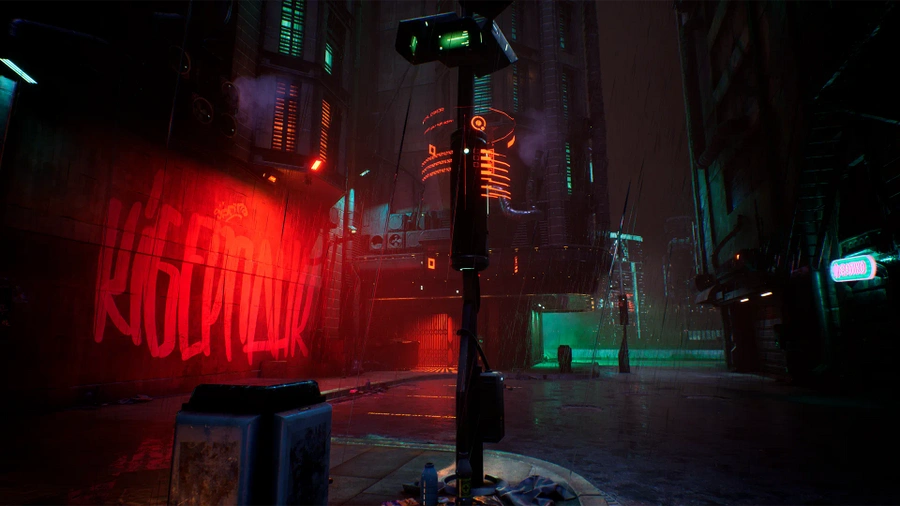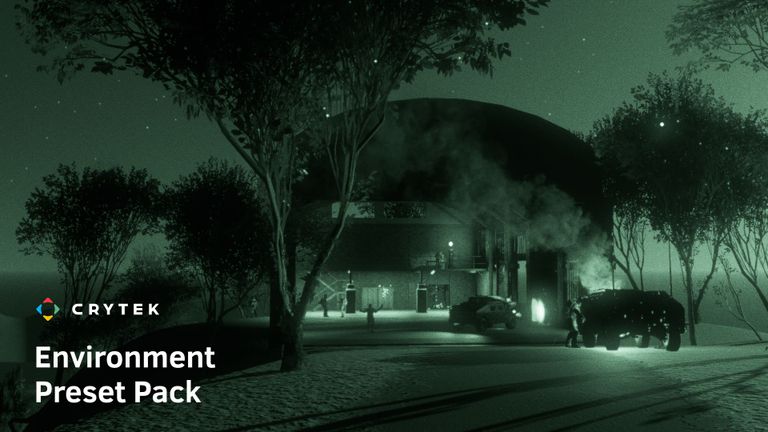Ultimate Guide to Game Engines for Indie Game Developers in 2025
10 January 2025Welcome to 2025! Time to make your indie game development dreams come true, or at least rage-quit a few times before you get there. The question remains: which game engine should you use to make it happen?
Picking game engines is an exciting task. But it’s also intimidating, and feels like a decision that will define your entire journey.
But here’s the good news! You don’t have to overthink it. Is your project a retro 2D side-scroller, a massive 3D epic, or an RPG that makes players cry? There’s a game engine out there for you.
This guide will help you figure out which one fits your style, your game’s premise, and your caffeine budget.
The Big Three: Common picks of Game Dev
These game engines include the industry titans and underdogs alike—tools so powerful and versatile that they’re used by everyone from fresh-out-of-college indie devs to AAA studios with massive budgets. But even giants have their drama, and 2024 was quite a year.

Unreal Engine 5: The Powerhouse
Best For: Developers chasing stunning visuals and cutting-edge tools.
Unreal is the heavyweight champion of game engines, known for its photorealistic graphics and flexible tools. Packed with features like Nanite (virtualized geometry), Lumen (dynamic global illumination), and Quixel Megascans (a massive library of free, photorealistic assets), Unreal empowers developers to craft visually stunning games.
Its Blueprint system makes it accessible even to non-coders. Unreal is as versatile as it is powerful, making it a top choice for ambitious indie teams and AAA studios alike. It’s free to start, with royalties only kicking in once your game is successful.
Strengths:
- Industry-leading visuals and tools.
- Flexible royalty model—pay only after you succeed.
- Extensive community support and resources.
Challenges:
- Steep learning curve for beginners.
- Hardware-intensive, requiring a robust setup for larger projects.
Games Made With Unreal Engine: Fortnite, Stray, Hellblade: Senua’s Sacrifice
Pro Tip: Unreal’s visuals are jaw-dropping, but they come at a cost. If your PC starts sounding like it’s auditioning for a space opera, it’s time to tweak the settings (or upgrade).
Unity: Versatile, But Under Fire
Best For: Developers who value flexibility and community resources.
Unity has long been the “everyman” of game engines, offering tools for everything from 2D platformers to VR experiences. Its asset store and active community make it approachable for beginners, while its scalability appeals to seasoned developers.
But the last two years have tested Unity’s relationship with its users.
The 2023 Runtime Fee Debacle
In 2023, Unity proposed a controversial runtime fee that would charge developers based on the number of times their games were installed. Developers expressed outrage, particularly over concerns about its impact on free-to-play games, charity projects, and bundled titles. The backlash led to Unity canceling the policy, but the trust damage was significant—so much so that CEO John Riccitiello resigned in October 2023. Unity announced they’d reversed the fee in September 2024.
The 2024 Minimum Spend Allegations
Anyone else had a call with a certain Game Engine company to tell you that for some reason you now have a MINIMUM SPEND of HALF A MILLION DOLLARS A YEAR with them.
Because our game is popular and we use their engine, we now have to spend $500k a year using their other services.…
— garry (@garrynewman) November 1, 2024
In late 2024, Garry Newman, creator of Rust and Garry’s Mod, publicly criticized a “certain game engine company” (alleged to be Unity) for enforcing a $500,000 minimum spend for developers with high-revenue games. Newman claimed his studio, Facepunch, had not signed new agreements but was still required to meet the spend—or pay the difference.
Unity has not confirmed these allegations, and the specifics remain unclear. However, the incident reignited discussions about trust, transparency, and the challenges of working with corporate-driven engines.
Strengths:
- Highly versatile, with tools for 2D, 3D, mobile, and VR development.
- Massive asset store and strong community support.
- Accessible to beginners while scalable for pros.
Challenges:
- Recent controversies have shaken developer trust.
- Policies and licensing agreements can be complex and unpredictable.
Games Made With Unity: Hollow Knight, Rust, Escape from Tarkov, 7 Days to Die
Pro Tip: Unity remains a powerful tool, but it’s wise to stay informed about ongoing policy changes and ensure your licensing agreements are rock solid.
Godot: The Open-Source Hero
Best For: Developers looking for transparency, flexibility, and a thriving community.
Godot’s the rising indie band everyone swears they discovered first, offering a free, open-source alternative to corporate game engines. With its intuitive node-based workflow, lightweight design, and a scripting language (GDScript) tailored for ease of use, Godot is perfect for small teams and solo developers.
Its 2D tools are industry-leading, and while its 3D capabilities are still growing, they’ve gained traction for smaller, stylized projects. Godot’s community-driven development ethos has made it a favorite among developers frustrated by the policies of larger companies.
Strengths:
- Completely free with no licensing fees.
- Intuitive for beginners while flexible for advanced use.
- Strong community support and transparency.
Challenges:
- 3D tools are less robust than those in Unity or Unreal.
- Smaller user base compared to the Big Three.
Games Made With Godot: Cassette Beasts, Cruelty Squad
Pro Tip: Godot’s lightweight design makes it easy to learn and experiment with. For Unity switchers, the community has plenty of resources to help you transition.
How Unity’s Controversies Shaped the Industry
The 2023 runtime fee debacle and the 2024 minimum spend allegations have cast a spotlight on the delicate balance between game developers and engine providers. While Unity’s tools remain widely used, these controversies have prompted many studios to explore alternatives like Unreal Engine and Godot.
Why It Matters:
This controversy highlights a growing tension between developers and large corporations. For many, Unity’s missteps were a reminder of the importance of trust and transparency in long-term partnerships. The rise of Godot reflects a broader push toward community-driven tools that prioritize developers’ needs over profits. Deciding to use Unity will mean you will have to remain informed about their policy changes.
Honorable Mention: CryEngine and Amazon Lumberyard

Once a titan in game development, CryEngine is slowly phasing out as a popular game engine. Known for its breathtaking visuals and FPS-friendly tools, it powered classics like Crysis and Kingdom Come: Deliverance. It’s perfect for ambitious indie devs who aren’t afraid of a challenge. Take it from us, it’s aptly named.
However, its steep learning curve and declining popularity have also made it less appealing to modern developers.
Amazon Lumberyard, a fork of CryEngine, retains its visual fidelity while integrating Amazon Web Services (AWS) for multiplayer and cloud-based features. It has found a niche in large-scale projects like Star Citizen, but its reliance on AWS can feel restrictive for some developers.
Strengths:
- CryEngine: Excellent visuals and open-world capabilities.
- Lumberyard: AWS integration and support for large-scale multiplayer projects.
Challenges:
- CryEngine: Shrinking user base and limited updates.
- Lumberyard: Reliant on AWS, with a small user community.
Games Made With CryEngine: Crysis, Kingdom Come: Deliverance
Games Made With Lumberyard: Star Citizen, New World
Pro Tip: If you’re exploring these engines, be prepared for a steep learning curve and specialized use cases.
Author’s Note on The Big Three:
Unreal, Unity, and Godot are like three distinct mentors. Unreal pushes you to perfection, Unity teaches you versatility (even with the drama), and Godot lets you forge your own path. Pick your guide, and start your journey.
Specialized Game Engines: Tools for Unique Visions
Not every game needs sprawling worlds or hyper-realistic graphics. These engines focus on specific genres, making them perfect for storytelling, retro vibes, or niche markets.
RPG Maker
Best For: Classic RPG fans who want to create rich, narrative-driven games.
RPG Maker is like your favorite childhood blanket—comfortable, familiar, and perfect for creating retro RPGs. With no coding required, you can build heartfelt stories, turn-based combat systems, and cozy worlds.
Strengths:
- No coding required—perfect for beginners.
- Tailored for RPGs with built-in tools for maps, battles, and character creation.
- Active community offering plugins and resources.
Challenges:
- Limited flexibility outside the RPG genre.
- Default assets can feel overused unless heavily customized.
Games Made With RPG Maker: To the Moon, Omori, LISA
Pro Tip: Swap out the default tilesets and assets early to make your game stand out. Players can spot an RPG Maker tileset from orbit.
Adventure Game Studio (AGS)
Best For: Developers creating point-and-click adventure games.
If you’re inspired by classics like Monkey Island or Thimbleweed Park, AGS is your go-to game engine. It’s free, easy to learn, and designed specifically for story-driven games with puzzle mechanics.
Strengths:
- Tailored for adventure games, with built-in support for inventory and dialogue.
- A strong community for advice and assets.
- Free to use, even for commercial projects.
Challenges:
- Best suited for 2D games—limited 3D capabilities.
- Requires strong narrative and puzzle design skills to shine.
Games Made With AGS: Unavowed, Primordia
Pro Tip: Focus on your story and puzzles—AGS takes care of the technical side so you can prioritize the player experience.
Ren’py
Best For: Visual novels and branching narratives.

Ren’py is the leading game engine for creating visual novels and interactive fiction. Built on Python, it’s beginner-friendly yet powerful enough to handle complex branching stories.
Strengths:
- Excellent for text-heavy, narrative-driven games.
- Simple scripting for beginners with advanced options for pros.
- Extensive documentation and community resources.
Challenges:
- Limited to visual novels—unsuitable for gameplay-heavy projects.
- Requires strong narrative design to engage players.
Games Made With Ren’py: Doki Doki Literature Club, Andromeda Six
Pro Tip: Customize your interface and visuals early—distinctive presentation makes your game stand out in a crowded genre.
Twine
Best For: Interactive stories and experimental games.
Twine isn’t your typical game engine. It’s a web-based tool for building branching narratives and text-heavy games. Perfect for indie devs who love storytelling without the distraction of graphics.
Strengths:
- No programming required—perfect for beginners.
- Ideal for text-heavy games and experimental storytelling.
- Easy to share and distribute via web browsers.
Challenges:
- Limited visuals—best for narrative-driven projects.
- CSS customization required for unique aesthetics.
Games Made With Twine: The Writer Will Do Something, Howling Dogs
Pro Tip: Experiment with CSS to elevate your Twine project visually—it’s a game-changer for standing out.
Author’s Note on Specialized Engines:
These game engines are like single-function kitchen gadgets. They might not be as versatile as the Big Three, but when you need them, nothing else will do.
Retro and Lightweight Game Engines: Small but Mighty
Retro game engines remind us that limitations can spark creativity. Whether you’re making something nostalgic or prototyping a quirky idea, these tools shine.
PICO-8
Best For: Retro-style games and game jams.
PICO-8 limits you to 8-bit graphics, forcing creativity within tight constraints. Its small size and simplicity make it ideal for quick, fun projects.
Strengths:
- Forces creative solutions through intentional limitations.
- Great for quick projects and learning game design fundamentals.
- Tight-knit, enthusiastic community.
Challenges:
- Limits can feel restrictive for ambitious projects.
- Only suitable for retro-style games.
Games Made With PICO-8: Celeste (original prototype), Minit Adventures
Pro Tip: View the constraints as features, not bugs—they push your creativity to new heights.
Construct 3
Best For: Non-coders who want to create polished, simple 2D games.
Construct 3 are the training wheels of game development. It’s a browser-based game engine designed to make 2D game development accessible to everyone. Its drag-and-drop interface and event-based logic allow for rapid prototyping and development without the need to write a single line of code.
Construct 3 provides a seamless experience for beginners and experienced developers alike.
Strengths:
- No coding required—perfect for beginners or non-technical users.
- Browser-based, meaning no installations are necessary.
- Ideal for quick prototyping and smaller projects.
Challenges:
- Limited scalability for more complex or resource-intensive games.
- Requires a subscription for commercial use.
Games Made With Construct 3: The Next Penelope, Cosmo’s Quickstop
Pro Tip: Construct 3’s event system is deceptively powerful—spend time mastering it to maximize your creative potential.
Scratch
Best For: Beginners and educational projects.

Scratch is an educational tool designed to introduce newcomers to programming and game mechanics. Its drag-and-drop interface is perfect for small, interactive projects. Did I mention 100% FREE?
Strengths:
- Easy to use, with a focus on teaching programming fundamentals.
- Great for prototyping simple mechanics.
- Accessible to younger audiences and newcomers.
Challenges:
- Not intended for professional-grade games.
- Limited scalability for complex projects.
Pro Tip: Use Scratch to prototype mechanics before committing to a more advanced engine.
Author’s Note on Retro Engines:
Retro game engines are the instant ramen for game developers —quick, satisfying, and perfect for experimentation. Plus, there’s nothing more “indie dev” than pixels the size of your face.
Miscellaneous/Hidden Gems: Off the Beaten Path
These engines might not dominate headlines, but they’re perfect for devs who like to experiment or tinker.
Defold
Best For: Lightweight projects with cross-platform ambitions.
Defold is an open-source, modular game engine designed for efficiency. Its Lua scripting language and built-in performance tools make it a great choice for small teams or solo developers.
Strengths:
- Lightweight and efficient, with cross-platform support.
- Built-in profiler for optimizing performance.
- Open-source and free to use.
Challenges:
- Smaller community compared to Unity or Unreal.
- Limited documentation for more advanced use cases.
Games Made With Defold: King’s League II, Family Island
Pro Tip: Use Defold’s profiler to optimize performance as you go—small tweaks can make a big difference.
GDevelop
Best For: Drag-and-drop devs who want cross-platform capabilities.
GDevelop is an open-source game engine designed for simplicity. Its event-based system lets developers create games without writing code, making it a favorite for beginners.
Strengths:
- No coding required—ideal for non-technical users.
- Open-source and free to use.
- Cross-platform support out of the box.
Challenges:
- Limited scalability for complex or resource-heavy games.
- Less community support compared to larger engines.
Games Made With GDevelop: Hyperspace Dogfights, Lil BUB’s HELLO EARTH
Pro Tip: Keep your event-based system organized—it’ll save you headaches during debugging.
LibGDX
Best For: Java developers who love customization.
LibGDX is a powerful framework for building cross-platform games, offering complete control over every aspect of development.
Strengths:
- Highly customizable for developers with Java expertise.
- Cross-platform support for desktop, mobile, and web.
- Open-source and free to use.
Challenges:
- Steep learning curve for non-programmers.
- Requires significant coding knowledge.
Games Made With LibGDX: Delver, Mindustry
Pro Tip: Time spent learning LibGDX pays off with unparalleled control over your project’s features.
Author’s Note on Miscellaneous Engines:
These game engines may not be mainstream, but they’re like hidden gems in a crowded market. If you’re willing to experiment, they can offer unique opportunities to create something truly personal.
Final Thoughts: Your Game, Your Engine

Choosing a game engine can feel daunting, but here’s the truth: no engine will outshine your creativity. With the right mindset (and maybe a bit of caffeine), you can bring your ideas to life.
What’s your go-to engine? Let us know in the comments, and check out our ultimate guide to game development tools for indie devs for more resources to level up your skills.
Good luck, devs. May your creativity thrive, and your code never crash.
– Ameera Rahaman, Content Manager

